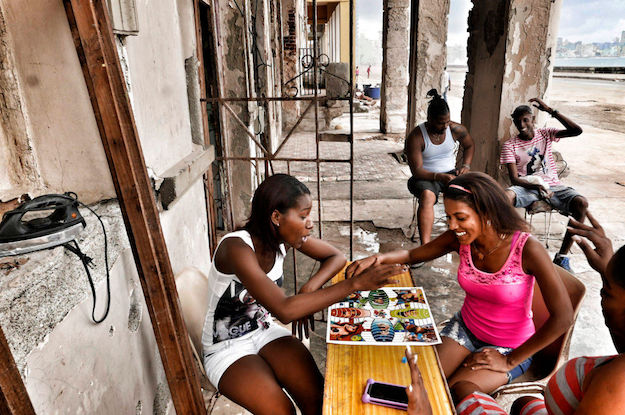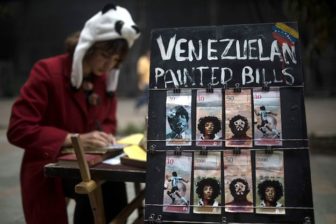Hurricane Irma was expected to largely skirt Cuba, sweeping over the eastern tip of the island before barreling toward Florida. Instead, the monstrous storm practically ran the length of the nation, leaving a path of destruction along the northern coast. This was the first time the eye of a category five storm reached the island since 1932, and the immediate consequences were dire.
The malecón, Havana’s famed seawall, was no match for the 20-foot swells that hurtled against it. Low-lying neighborhoods were flooded, laying to waste the belongings of tens of thousands of Habaneros and flooding the U.S. Embassy. The historic hurricane took 10 Cuban lives, countless homes and caused millions of dollars in damage to resort towns, airports and farms.
Irma did not, however, take the resilience, resolve and spirit of the Cuban people. It did not leave Cuba uninhabitable and it didn’t destroy the beauty the country has to offer. If you’ve thought about visiting Cuba, now is the time. Cubans are very much back to business – and their doors are open to visitors.
But you wouldn’t know it from the news. Media coverage focused on horrific scenes of destroyed coastal towns and severe flooding in the capital. Along with a recent State Department travel advisory that urged visitors to “carefully consider the risks of travel to Cuba” while recovery efforts are underway, this has caused panic among would-be travelers. The upshot? The rest of the State Department’s message – that major roads were open, and that power and water service has largely been restored – was overshadowed. This led to trip cancellations that further harmed Cuban entrepreneurs and tourism workers who were already suffering from measures taken by the administration of President Donald Trump to limit U.S. travel to Cuba.
“It stings to get cancellations now. After a summer of uncertainty with Trump, there’s now confusion about Hurricane Irma,” said Julia de la Rosa, owner of la Rosa de Ortega B&B. “The sun is shining. Kids are in school. Restaurants and beaches are open. Everything is back to normal now, but people are cancelling visits in November and December. I just don’t understand.”
De la Rosa is correct. Havana was largely spared from destruction. Old Havana’s plazas, parks, churches, cobblestone streets, and cafés are up and running, and are as charming as ever. The city’s impressive art museums and private studios and galleries are open, as are popular tourist attractions like Ernest Hemingway’s home, the iconic Hotel Nacional’s garden and the stately mansions of Vedado and Miramar. And, if your travel category permits it, you can once again take the tunnel under the bay – which was filled with water during the storm – to Havana’s eastern beaches to soak up the sun on white sands.
Hotels long-popular with Americans, like the historic Hotel Nacional, and Parque Central and Saratoga in the city’s historic core are running at 100 percent capacity. Famed Cuban paladars (private restaurants) like La Guarida, made popular by the Oscar-nominated film Fresa y Chocolate, San Cristóbal, where Malia Obama served as translator for her father, then-President Barack Obama, and the internationally acclaimed Atelier are still serving meals. The airports, bus stations and, of course, the 1950s Chevys and Fords, are up and running. Electricity was restored to the city days before South Florida residents, some of whom are still without power, got back on the grid.
The same is true for the cities of Cienfuegos, Santiago, Trinidad and the beautiful tobacco region of Pinar del Rio, all of which fell outside of Irma’s path.
The misconception that the island was left completely destroyed comes at a tough moment for Cubans. Confusion about Trump’s travel policy has led to the false belief that Americans can’t visit the island, resulting in a decline in visitors. This has hit Cuban entrepreneurs and folks working in the tourism sector particularly hard, and many small businesses won’t survive a Trump-Irma combo that results in a tourism slump.
As was the case with New York following 9/11, it’s important to remember that recovering and rebuilding means visiting. Visiting with your hearts, minds and wallets is what helps cities rebuild and aids the local economy. At Cuba Educational Travel, we’re relying on our steady stream of visiting families, university groups and social organizations to help make a difference, redesigning programs where possible to support affected areas with recovery efforts and prioritizing businesses and individuals that are rebuilding. Many travelers are bringing donations that we then channel to the areas that were hit hard by Irma.
It’s an incredibly exciting and interesting time to visit the island. The opening with the United States and reforms in Cuba have led to a dynamic and robust private sector. Cuban art, dance and music is richer than ever. The culinary scene and nightlife leads to memorable experiences. The same smiles and open arms await you from the Cuban people. Direct flights from the U.S. and incredibly diverse lodging options from new hotels and bed and breakfasts make it easier than ever. The Cuba that everyone says they “want to visit before it changes” is still safe, beautiful and unchanged, despite Irma.
So come for a visit. Not only will it be culturally enriching, intellectually stimulating and incredibly enjoyable, but you’ll also be standing strong with your Cuban neighbors and helping them move forward.
—
Laverty is a leading expert on Cuba and U.S.-Cuba relations. He is founder and president of Cuba Educational Travel.





